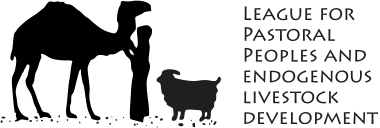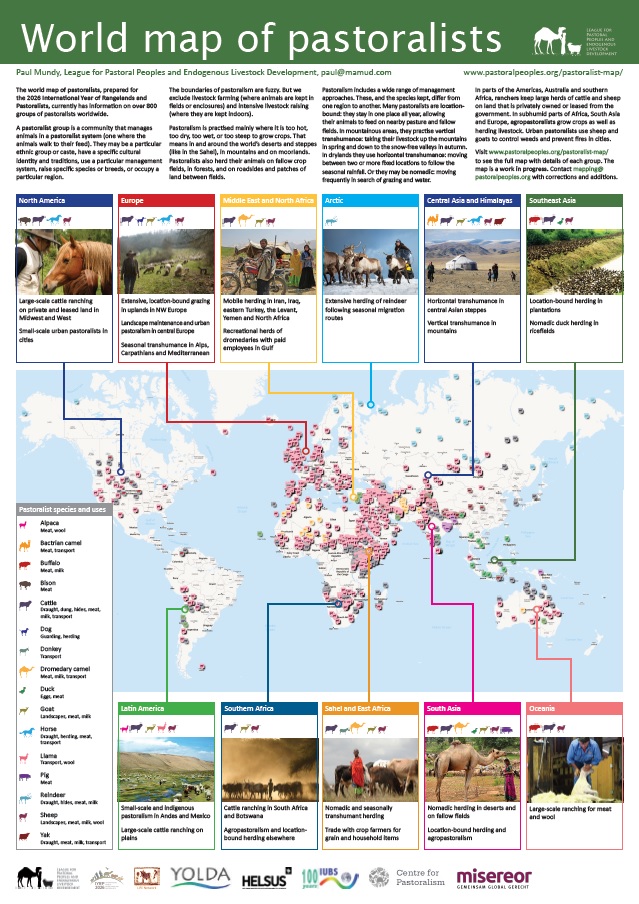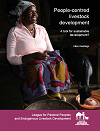With camelids into a sustainable future
The importance of camelid herders for the conservation of our world’s rangelands is increasingly recognized internationally. To mark the International Year of Camelids, this thematic dossier introduces camelid pastoralists, how they sustainably manage rangelands in the Andean highlands, East Africa and Mongolia, and why the global community should support camelid pastoralism for a resilient future of our planet.
Contents
- Allies for a green future – Igshaan Samuels and Maryam Niamir-Fuller
- Camelid husbandry worldwide – Bernard Faye
- Where in the world are camelids? – Paul Mundy
- New market opportunities in the Andes – Cecilia Turin and Mariana Quiroga Mendiola
- Camels as far as the eye can see – Piers Simpkin and Jacob Wanyama
- Proud to be a camel herder – Interview with Shariin Juu
- Participatory research for diversity – Ilse Köhler-Rollefson and Cecilia Turin
- The future of camelid husbandry – Ilse Köhler-Rollefson, Ann Waters-Bayer, Sabine Dorlöchter-Sulser and Cecilia Turin
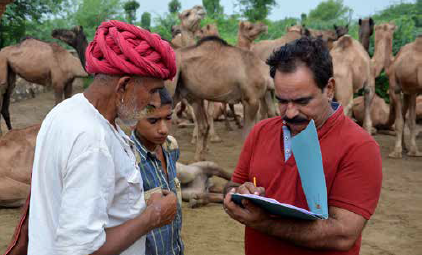
This dossier, co-published by Misereor, the League for Pastoral Peoples and DITSL, includes articles co-authored by LPP’s Ilse Köhler-Rollefson, as well as several other articles by long-term collaborators with LPP.
The centre spread is a poster showing the worldwide distribution of the seven camelid species (alpacas, Bactrians, dromedaries, llamas, guanacos, vicuñas and wild Bactrians (which have been recognized as a separate species from the domesticated Bactrians). This map is based on LPP’s world Pastoralist Map.
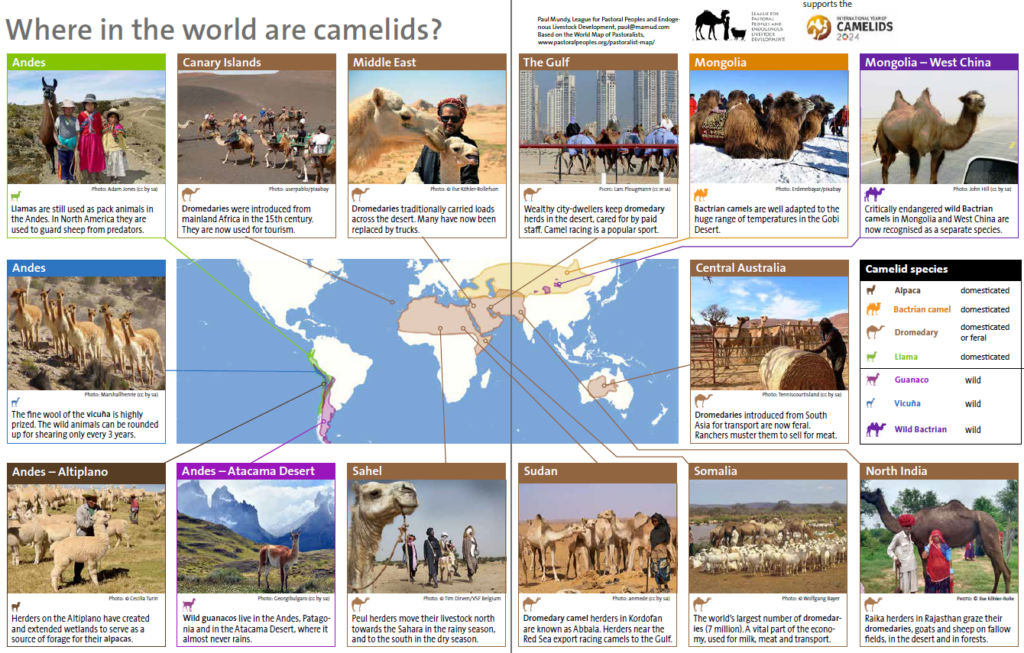
Download in English (from Misereor or LPP) or German (Misereor or LPP).
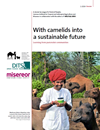
Download document
